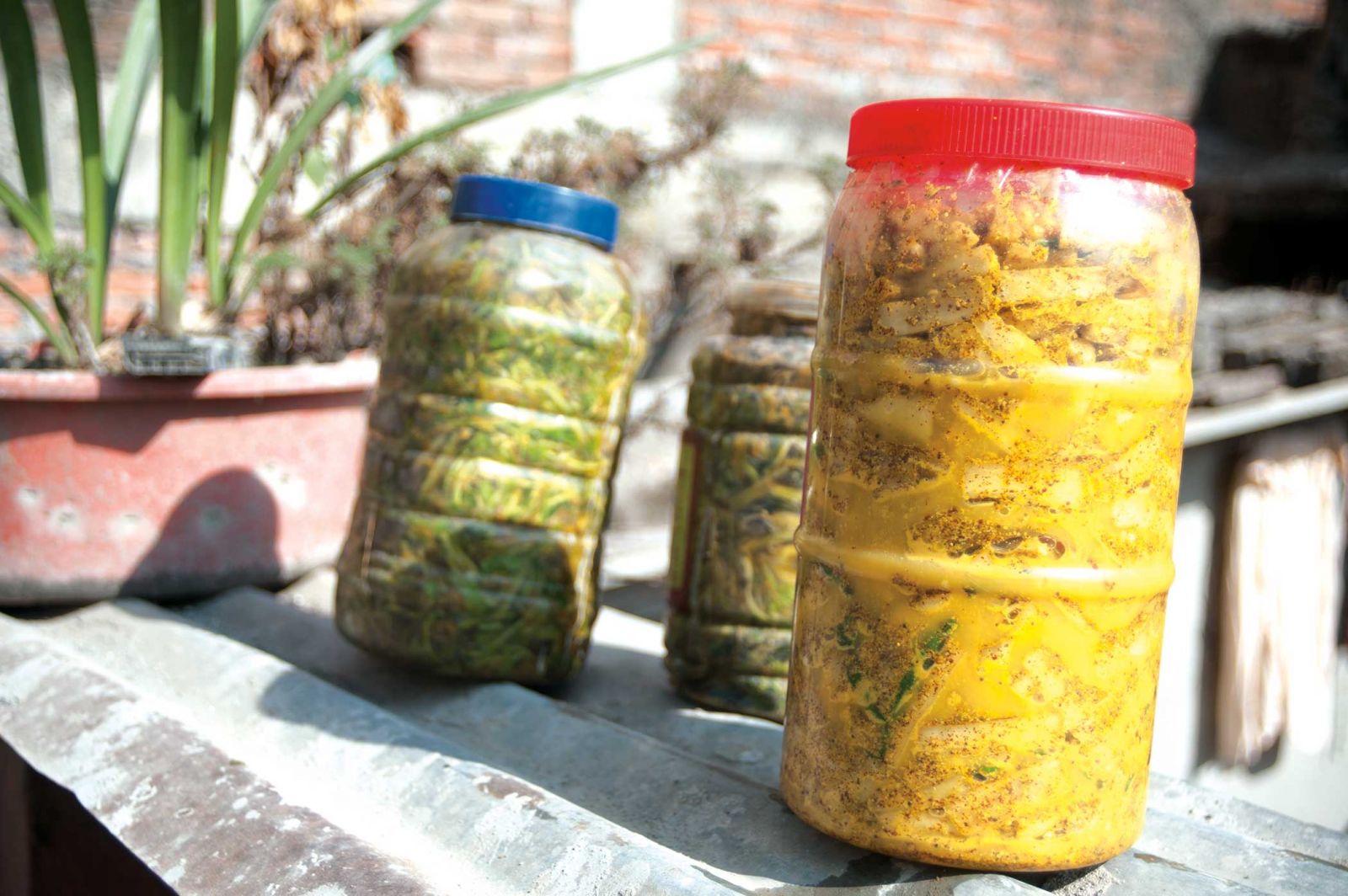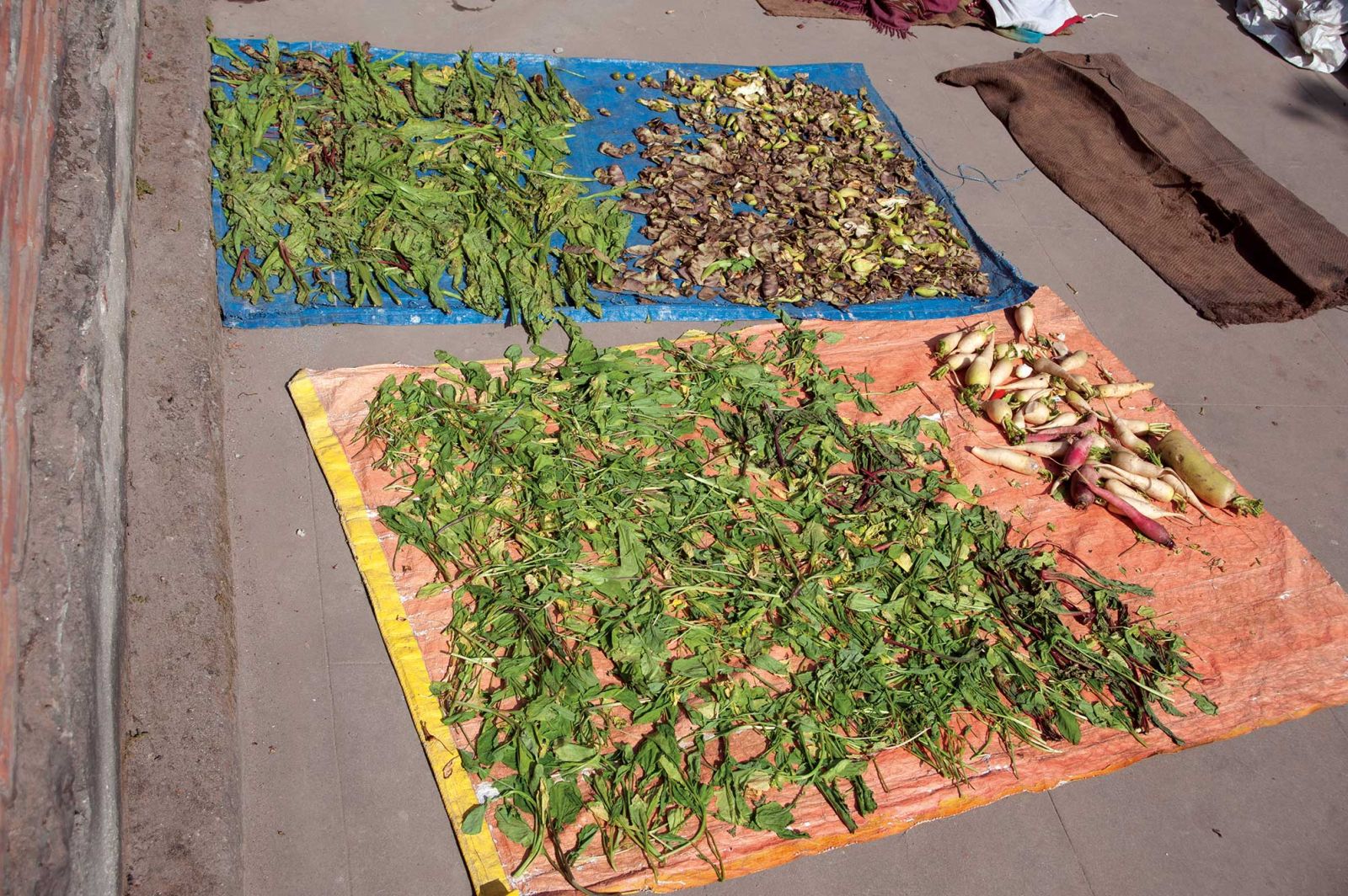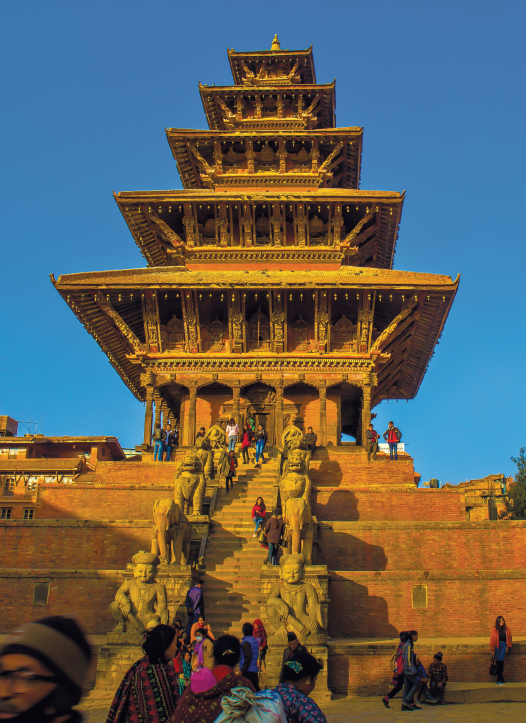
On every visit to my hometown of Gorkha as a child, I was always fascinated by heaps of vegetables left out in the open sun on roofs and the front lawn for months and sometimes even years. And the people making sure that the chickens or birds were not hovering around them. Food dehydrating and fermenting has been practiced in Nepal since time immemorial, and is still prevalent. You could even say that wherever a Nepali person resides, you can find these nutritious and tasty fermented dishes. The tradition that first started due to the necessity of preserving food, mostly for the cold winter, later became a choice and a lifestyle.
In our homes, various vegetables and other food are fermented in a way that can produce lactobacillus, a bacteria that can make them rot, ferment, dehydrate and as a result, taste amazing. Though food fermentation is practiced all over the world, Nepali culture includes a wide range of varieties of these, some of which include gundruk, mulako chaana, sinki, biriya, adauri, masyaura, titaura, kinema, yangben and more.
According to a Newari legend, the history of gundruk and mulako chaana comes from the residents of Kirtipur. When the then king Prithvi Narayan Shah was trying to conquer their kingdom, he tried to destroy everything edible growing in the Kirtipur fields. The scarcity of vegetables to cook led the Newari women to start drying radish and mustard leaves. They found the whole process extremely unique and delicious in taste, so they began more experimentation with drying and fermenting other varieties of food, too.


Gundruk
Gundruk (pickled/fermented leafy vegetables) is the most common and perhaps the oldest version of Nepali fermented vegetables. It’s found all over the country, and is made of different greens like rayo-saag (leaf mustard), mulako saag(radish greens) and others. Loved by many, this delicacy is one of the must-have foods that Nepalis living outside the country pack their suitcases with at the end of a visit home.
Making gundruk starts with the cleanly washed vegetables put out for wilting in the sun for a few days. Then, they are crushed, soaked in hot water for a while and kept in an airtight steel or glass container for a week. The longer it is kept in the container, the better the taste is. Traditional equipment used in crushing the saag may be a dhiki (rice/millet beater) or silauto-lohoro (pair of stone grinders) and the fermentation is traditionally done in a kasaudi (a round, narrow-mouthed rice cooker made of thick brass or aluminum), dekchi (a deep handle-less saucepan) or other glass or steel pots and containers. Later, the fermented leaves are left to dry some more in the sun again before being stored. In the villages, drying is done on a gundri (a woven mat made from paddy straw), or a maandro (a bamboo mat). Well-dried gundruk looks almost like tobacco leaves. After sun drying, Gundruk can be preserved for a long time by storing or packing it into polythene bags.
Both fresh and totally dried gundruk can be cooked and eaten in different ways, like gundruk ko achar, gundruk sadheko, gundruk vatmas sadheko and gundruk ko jhol, to name just a few. Gundruk curry tastes much better when eaten with dhindo, and some form of gundruk is often served with a Thakali meal.
Biriya
Normally people preserve food for the winter season but people in flood-risk areas like the Terai preserve food for the rainy season when green vegetables are hard to find. Biriya is somewhat similar to gundruk, usually made of fermented mustard leaves, and is mostly found in the Terai. Slightly wilted green vegetable, raayo or mustard leaves are covered with black gram paste. They are then left to dry for some days, after which they can be preserved like gundruk. Biriya curry, usually cooked with potatoes and meat, is a popular use for it. It is considered to be very nutritious and its health benefits including aiding in digestion, weight management, and strengthening the immune system.
Masyaura
Masyaura is another famous dried and fermented vegetable, usually made of black lentils (maas) mixed with taro, taro stems, taro leaves (karkalo) or young taro leaves (gaavaa). First of all, the lentils are ground into a powder. After adding water to this lentil powder, well minced vegetables or sliced pieces of taro leaves are added, and it is then smashed it till it becomes sticky. Small nuggets are hand-shaped and dried for a few days on a maandro or sukul for some days. After sun-drying, the nuggets are kept in air tight containers of plastic, glass or steel. Rich in carbohydrates, proteins and minerals, masyaura is mostly found in the eastern hilly region of Nepal and tastes best when cooked with potatoes, gundruk, and meat.
Mulako Chaana
Found throughout the country, mulaako chaana is best enjoyed by families in winter. Well washed radish is sliced into thick pieces and sun-dried for about five days. When the radish dries out and gets thinner, it is stored in dry steel or glass pots or other airtight containers. Mulako chaana is mostly used to make curry and pickles and also tastes amazing when cooked with beans or dried meat. It is popularly eaten as mulako achaar, made by mixing it with various spices such as turmeric, red chilli powder, salt and boiling oil. The pickle can be stored for quite a while and is eaten mainly with our staple rice meals.
Kinema
Kinema is famous among the Kirat communities in the eastern Himalayan regions of Nepal and also in Darjeeling, Sikkim and other parts of India and Bhutan where Nepalis live. It is sticky fermented soybeans. At first, cleaned soybeans are soaked in water for a night and boiled for about three hours, till soft. Excess water is drained off and then it is smashed, traditionally using an okhli and muslo (wooden mortar and pestle) or simply with one’s fingers. A small amount of firewood ash is added to the cooked soybean grits and they are covered with the leaves of fern or wrapped with sackcloth. Later, they are put into a jute bag or a bamboo basket and hung above the earthen kitchen oven for about three days. Kinema is generally consumed within a few days of preparation as curry mixed with green vegetables.

Dal-bhat, the ultimate vegan food
With the climate crisis, people all over the world are suddenly conscious of what they eat. They are...










